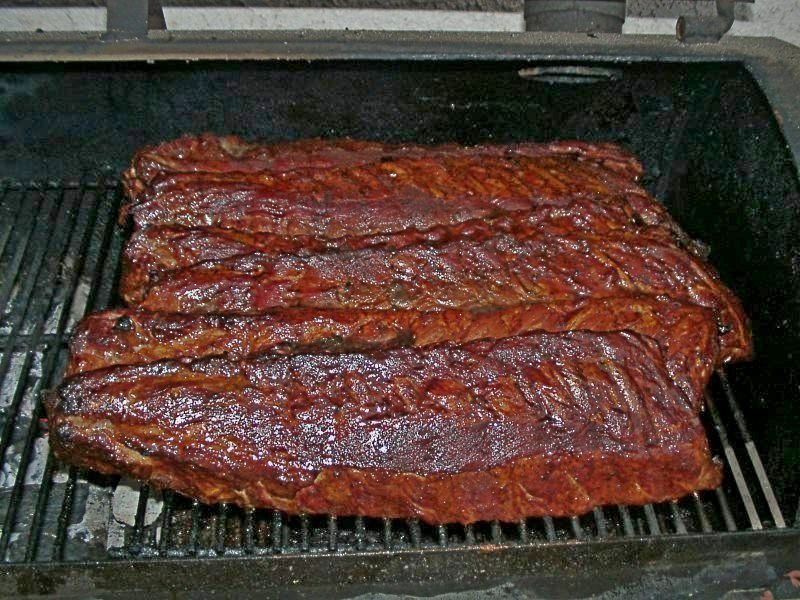Like Chinese food and tacos, most beer styles have been thoroughly “Americanized” in some way or another. Take the classic British IPA, kick up the hops about 20 notches and you have one of the most popular beer styles west of the Atlantic. Or maybe your stout doesn't have enough of a kick to it. Just turn the alcohol dial to 11 and enjoy your imperial stout. Yes, the story of the imperial stout involves Tzars and inter-European trade, but Americans gave “imperial” its broader meaning relating to strong versions of classic styles. It seems no style is immune from the relentless evolution and Americanization. Imperial pilsener, black IPAs, extra hoppy porters, and fruit/coffee/chocolate/herbs/bacon in just about everything in between. Subtly isn't an American virtue.
With that in mind, I share with you a recipe for a style I've not seen previously Americanized in any meaningful way: Saison. Camille Saison, named after the romantic composer Camille Saint-Seans, is a hop forward version of a Belgian saison. With 38 IBUs but only measuring in 5.5% ABV, this certainly isn't your standard saison. Peppery spice and piny citrus dominate the aroma. Pepper and citrus hit the palate strong up front but give way to a balanced profile of yeast, malt, and hops. The high hop content is cleansed by lively carbonation and the light body leaves you refreshed for another sip. Bold, yet quaffable, Camille Saison is a beer that will certainly be added to my regular rotation. Enjoy.
| Camille Saison |
| Saison |
| Type: All Grain | Date: 07/05/2012 | |||||||||||||||||||||||||||||||||||||||||||||||||||||||||||||||||||||||||||||||||||||||||||||||
| Batch Size (fermenter): 5.00 gal | Brewer: Garth Peterson | |||||||||||||||||||||||||||||||||||||||||||||||||||||||||||||||||||||||||||||||||||||||||||||||
| Boil Size: 6.35 gal | Asst Brewer: | |||||||||||||||||||||||||||||||||||||||||||||||||||||||||||||||||||||||||||||||||||||||||||||||
| Boil Time: 60 min | Equipment: Pot and Cooler ( 5 Gal/19 L) - Extract/Partial Mash | |||||||||||||||||||||||||||||||||||||||||||||||||||||||||||||||||||||||||||||||||||||||||||||||
| End of Boil Volume 5.98 gal | Brewhouse Efficiency: 72.00 % | |||||||||||||||||||||||||||||||||||||||||||||||||||||||||||||||||||||||||||||||||||||||||||||||
| Final Bottling Volume: 4.60 gal | Est Mash Efficiency 87.6 % | |||||||||||||||||||||||||||||||||||||||||||||||||||||||||||||||||||||||||||||||||||||||||||||||
| Fermentation: Ale, Two Stage | Taste Rating(out of 50): 0.0 | |||||||||||||||||||||||||||||||||||||||||||||||||||||||||||||||||||||||||||||||||||||||||||||||
| Taste Notes: | ||||||||||||||||||||||||||||||||||||||||||||||||||||||||||||||||||||||||||||||||||||||||||||||||
Ingredients
| ||||||||||||||||||||||||||||||||||||||||||||||||||||||||||||||||||||||||||||||||||||||||||||||||
| ||||||||||||||||||||||||||||||||||||||||||||||||||||||||||||||||||||||||||||||||||||||||||||||||
Mash Steps | ||||||||||||||||||||||||||||||||||||||||||||||||||||||||||||||||||||||||||||||||||||||||||||||||
Name | Description | Step Temperature | Step Time |
Protein Rest | Add 6.74 qt of water at 130.8 F | 122.0 F | 30 min |
Saccharification | Add 5.10 qt of water at 192.1 F | 149.0 F | 30 min |
Mash Out | Add 5.75 qt of water at 211.9 F | 168.0 F | 10 min |
Sparge Step: Fly sparge with 2.97 gal water at 168.0 F
Mash Notes: Double step infusion - for light body beers requiring a protein rest. Used primarily in beers high in unmodified grains or adjuncts.
Carbonation and Storage
Carbonation Type: BottleVolumes of CO2: 2.5
Pressure/Weight: 4.11 oz
Carbonation Used: Bottle with 4.11 oz Corn Sugar
Keg/Bottling Temperature: 70.0 F
Age for: 30.00 days
Fermentation: Ale, Two Stage
Storage Temperature: 65.0 F
Notes
Created with BeerSmith




.JPG)





.JPG)
.jpg)


.JPG)